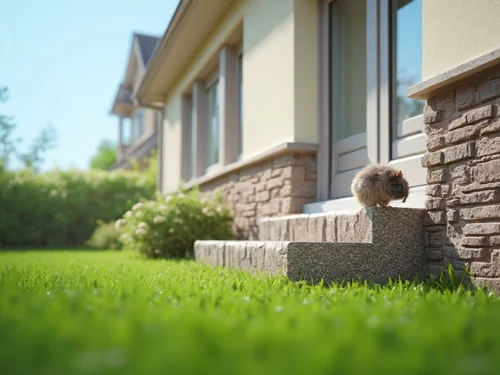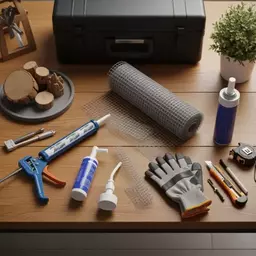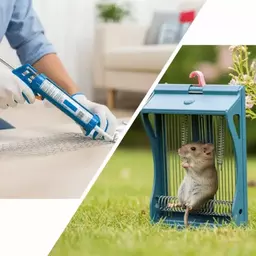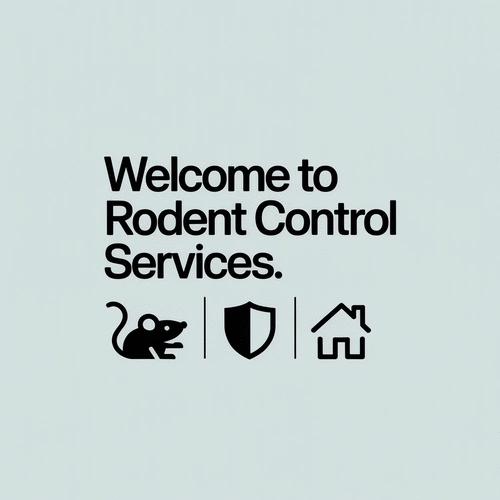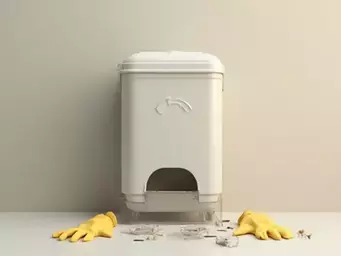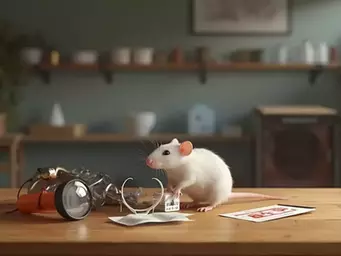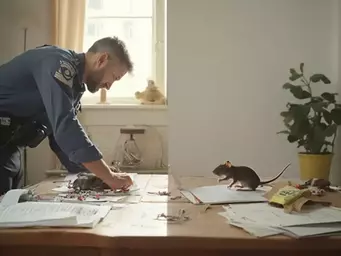As rodent infestations become an increasing concern in 2025, understanding effective rodent-proofing strategies is not just wise—it's essential. This article provides crucial insights to safeguard your property and maintain a healthy environment.
What You Will Learn
- Importance of Rodent-Proofing: Protects your property from damage and reduces health risks associated with infestations.
- Common Rodent Species: Recognizing behavior patterns of mice and rats enhances the effectiveness of your exclusion strategies.
- Key Exclusion Strategies: Sealing entry points, eliminating food sources, and maintaining cleanliness are crucial for prevention.
- Health Risks: Understanding diseases related to rodents underscores the urgency of effective rodent management.
- Ongoing Vigilance: Regular inspections and proactive measures are essential for long-term rodent control.
Mice vs. Rats: Key Differences and Behaviors
Understanding the distinctions between common rodent species helps in devising effective rodent-proofing strategies.
Mice
- • Size: Small (2-4 inches)
- • Behavior: Curious, explore new areas
- • Preferred Nesting: Wall voids and hidden spaces
Rats
- • Size: Larger (6-10 inches)
- • Behavior: Cautious, avoid new areas
- • Preferred Nesting: Basements and burrows
Understanding Rodent-Proofing: The Importance of Effective Exclusion in 2025
As we step into 2025, the need for effective rodent-proofing has never been more crucial for property owners. With the ongoing challenges of rodent infestations, understanding how to exclude these unwanted guests is key to maintaining a safe and healthy environment. Every year, I encounter clients who are surprised by how quickly rodents can invade their homes or businesses. This section will delve into the importance of rodent-proofing and the steps we can take to protect our spaces.
Effective rodent-proofing not only safeguards your property but also prevents potential health risks and damage caused by infestations. By investing time in exclusion strategies, you're making a proactive choice for the future of your home or business. Remember, the best defense is a good offense!
Why Rodent-Proofing Matters for Your Property
Rodent-proofing your property is essential for several reasons. First and foremost, it helps to maintain a clean and safe environment. No one wants to deal with the negative impacts of a rodent infestation, including property damage and health risks. Additionally, effective exclusion methods can save you money in the long run by preventing costly repairs and pest control services.
- Preventing Damage: Rodents can gnaw through wires, insulation, and even structural components.
- Health Risks: Rodents are carriers of various diseases that can affect humans and pets.
- Peace of Mind: Knowing your property is secure allows you to focus on what matters most.
When you prioritize rodent-proofing, you’re also enhancing the overall sustainability of your property. I often tell my clients that a clean and well-maintained space is less likely to attract rodents, making exclusion an ongoing commitment.
Common Rodent Species and Their Behavior Patterns
Understanding the common rodent species in your area is crucial for effective exclusion. In many places, the two most prevalent types are mice and rats, each exhibiting distinct behaviors and preferences. By recognizing their patterns, you can tailor your exclusion efforts accordingly. For example, did you know that mice are typically more curious and explore new areas, while rats tend to be more cautious and avoid unfamiliar spaces? For a deeper dive into pest management strategies, you might find this 2023 Structural Pest Management IPM document particularly informative.
Understanding the Differences Between Mice and Rats
While both mice and rats can wreak havoc, their differences can help you devise targeted strategies for exclusion. Here’s a quick comparison:
| Species | Size | Behavior | Preferred Nesting Areas |
|---|---|---|---|
| Mice | Small (2-4 inches) | Curious, explore new areas | Wall voids and hidden spaces |
| Rats | Larger (6-10 inches) | Cautious, avoid new areas | Basements and burrows |
This table highlights their key differences, making it easier for you to devise effective rodent-proofing strategies for your property. For further guidance on urban rodent control, you can refer to resources like the Boston Rodent Prevention document which offers additional tips.
Health Risks Associated with Rodent Infestations
Rodent infestations pose several health risks that can affect you and your loved ones. Diseases such as hantavirus, salmonella, and leptospirosis can be transmitted through droppings, urine, and even bites. It's essential to keep in mind that these health risks can impact not only your family but also your pets! Staying informed about local pest trends, such as those detailed in the NYC Rodent Mitigation Zones Annual Report, can help property owners understand the scope of rodent activity in urban areas.
By prioritizing rodent-proofing, you're taking an essential step towards creating a safer environment. I always encourage my clients to tackle rodent management proactively to reduce the risks associated with infestations and enjoy peace of mind.
Pro Tip
Did you know? Regularly inspecting your property for potential entry points is just as vital as sealing them. Make it a habit to check for new cracks or gaps, especially after severe weather. A proactive approach can significantly reduce the risk of a rodent infestation!
Recap of Essential Rodent-Proofing Strategies for 2025
As we wrap up our discussion on effective rodent-proofing, it’s essential to highlight the key steps that can make a significant difference in keeping your property safe from infestations. Remember, proactive measures are your best defense! Here’s a quick recap of the most critical strategies:
- Seal Entry Points: Regularly inspect and seal cracks, gaps, and vents to prevent rodents from sneaking in.
- Eliminate Food Sources: Store food in airtight containers and dispose of waste promptly to deter hungry rodents.
- Maintain Cleanliness: Keep your home clutter-free and practice regular cleaning to remove nesting sites and attractants.
- Landscaping Modifications: Trim shrubs and remove debris to minimize hiding spots for rodents.
- Utilize Innovative Deterrents: Consider modern solutions like ultrasonic devices and smart sensors to monitor and deter rodent activity.
By implementing these strategies, you’ll create a strong barrier against rodents and contribute to a pest-free environment in your home or business. It’s all about being proactive!
The Importance of Ongoing Vigilance in Preventing Infestations
It’s important to remember that rodent control isn’t a one-time effort. Ongoing vigilance is crucial for maintaining a rodent-free property. I can’t stress enough how regular inspections and preventive measures can save you from future headaches. By keeping an eye on your environment and addressing potential issues early, you can avoid larger infestations down the road!
Establishing a routine maintenance schedule can help in monitoring the effectiveness of your rodent-proofing efforts. This includes regular assessments of your property’s entry points, food storage practices, and cleanliness levels. It’s a small commitment that pays off significantly in the long run!
Frequently Asked Questions About Rodent-Proofing
- Q: Why is rodent-proofing becoming more crucial in 2025?
- A: Rodent infestations are an increasing concern, making effective rodent-proofing essential to safeguard properties and maintain healthy environments.
- Q: What are the main differences between mice and rats?
- A: Mice are smaller (2-4 inches), curious, and prefer nesting in wall voids. Rats are larger (6-10 inches), cautious, and prefer basements and burrows.
- Q: What are the primary health risks associated with rodent infestations?
- A: Rodents can transmit diseases such as hantavirus, salmonella, and leptospirosis through droppings, urine, and bites, affecting both humans and pets.
- Q: What are the key strategies for effective rodent-proofing?
- A: Essential strategies include sealing entry points, eliminating food sources (using airtight containers), maintaining cleanliness, making landscaping modifications, and utilizing innovative deterrents like ultrasonic devices.
- Q: How often should I inspect my property for potential rodent entry points?
- A: Regular inspections are crucial. Make it a habit to check for new cracks or gaps, especially after severe weather, as proactive monitoring significantly reduces infestation risks.
Encouragement to Take Action: Your Path to a Rodent-Free Property
Implementing These Tips for Lasting Prevention
Now that you’re equipped with essential rodent-proofing strategies, it's time to take action! Implementing these tips into your daily routine will establish a strong foundation for a rodent-free home or business. Remember, consistency is key. Whether it’s sealing entry points or managing food sources, your diligence will make all the difference.
If you find yourself facing challenges or uncertainties during this process, don’t hesitate to reach out for help. At Rodent Control Services, we’re here to support you with our expertise and resources. Together, we can create a pest-free environment for your community!
Consulting Professionals: When and Why It’s Necessary
There are times when, despite our best efforts, rodent issues can persist or escalate. In such cases, consulting professionals becomes imperative. Our team at Rodent Control Services specializes in identifying complex infestations and providing effective solutions tailored to your specific needs.
Community Awareness and Local Pest Regulations
Additionally, staying informed about local pest regulations and community awareness initiatives can enhance your pest management efforts. Knowing the guidelines can help you understand when professional help is essential and what to expect from pest control services. It also cultivates a more informed community, which is vital for long-term pest prevention!
Recap of Key Points
Here is a quick recap of the important points discussed in the article:
- Seal Entry Points: Regularly inspect and seal cracks, gaps, and vents to prevent rodents from sneaking in.
- Eliminate Food Sources: Store food in airtight containers and dispose of waste promptly to deter hungry rodents.
- Maintain Cleanliness: Keep your home clutter-free and practice regular cleaning to remove nesting sites and attractants.
- Landscaping Modifications: Trim shrubs and remove debris to minimize hiding spots for rodents.
- Utilize Innovative Deterrents: Consider modern solutions like ultrasonic devices and smart sensors to monitor and deter rodent activity.

